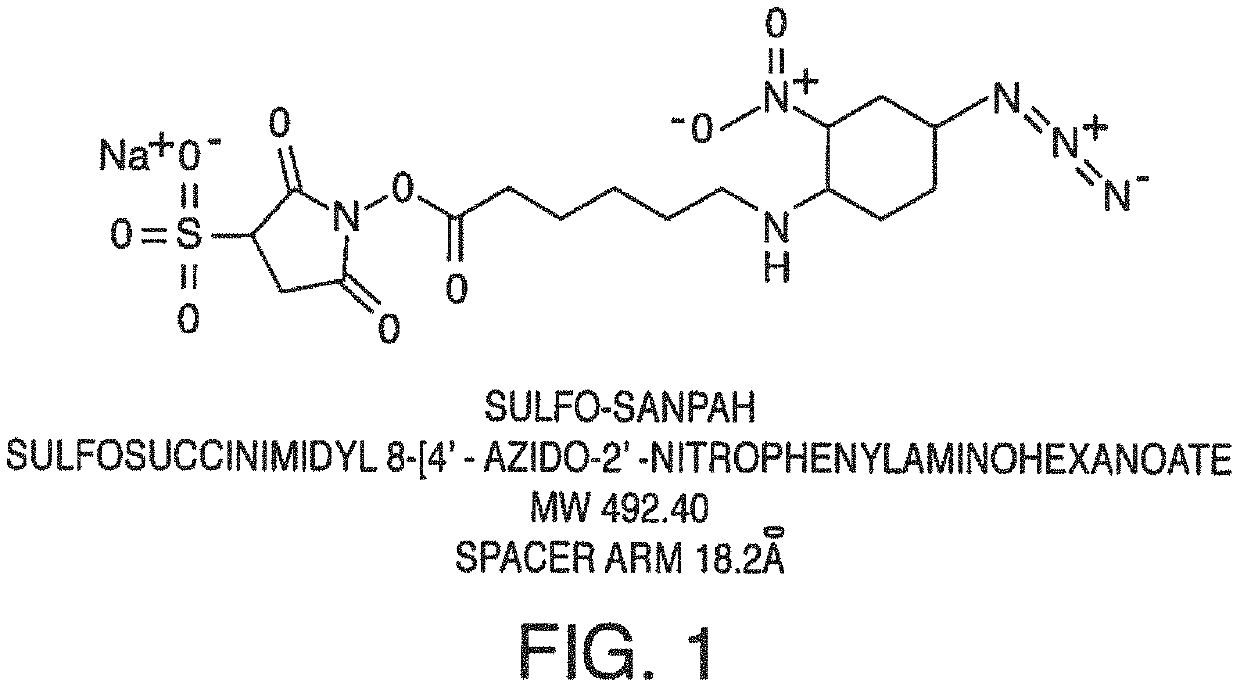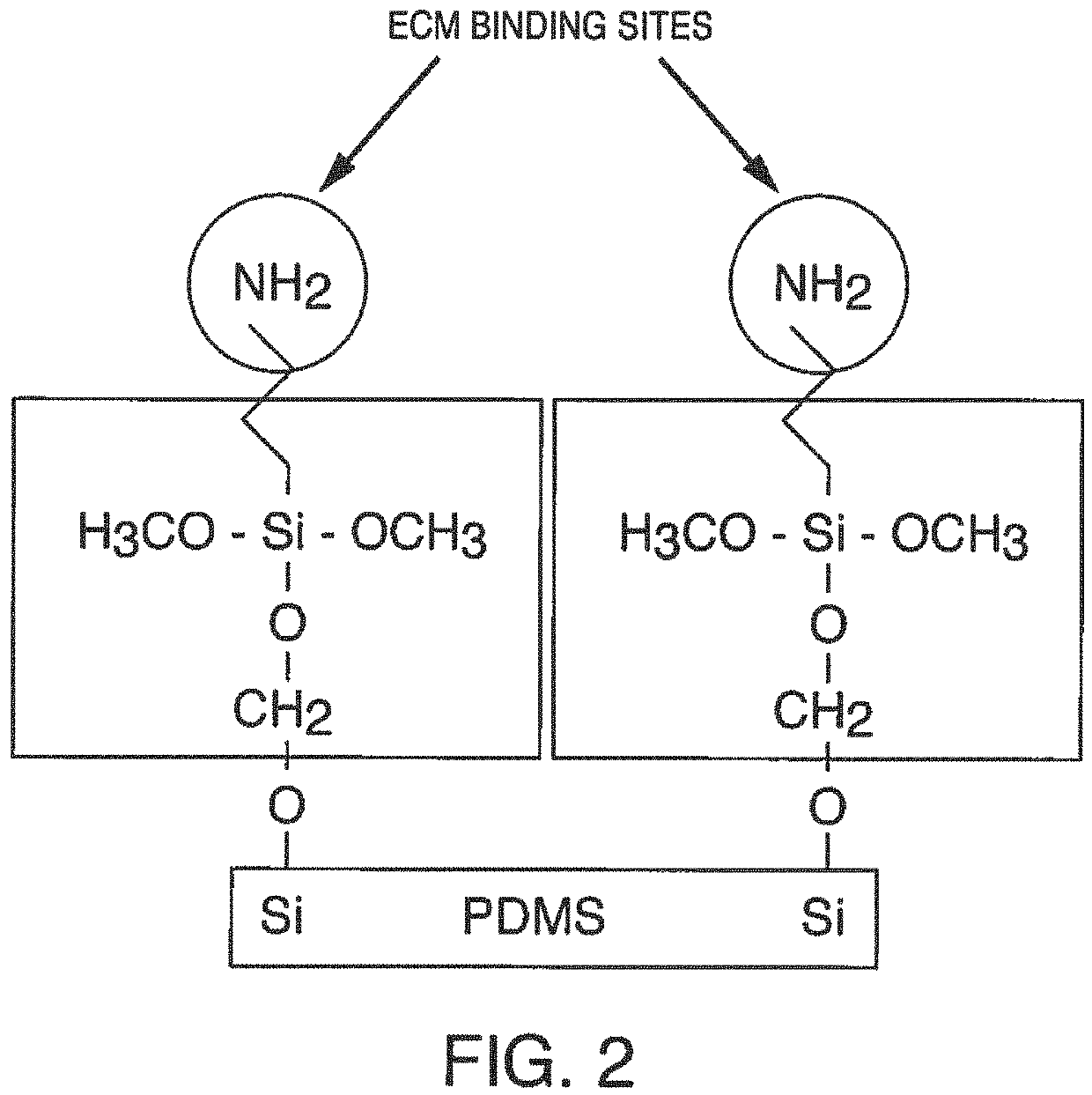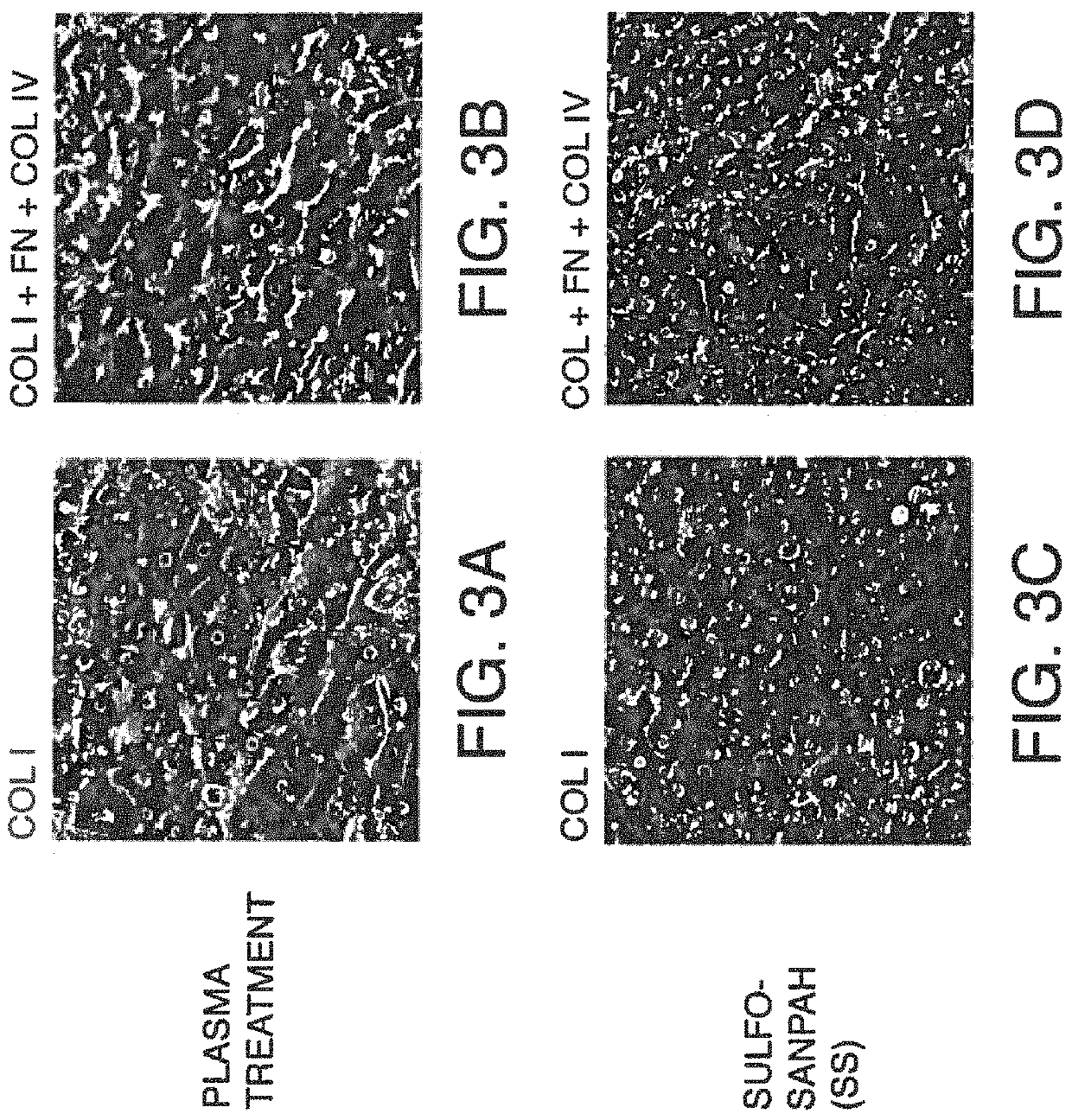Compositions and methods of cell attachment
a cell attachment and cell technology, applied in the field of cell attachment, can solve the problems of often applying generically with mixed ecms
- Summary
- Abstract
- Description
- Claims
- Application Information
AI Technical Summary
Benefits of technology
Problems solved by technology
Method used
Image
Examples
example 1
Cellular Crosslinking to Improve Cell Attachment to Channels
[0119]In one embodiment, the present invention contemplates using a crosslinker to covalently attach proteins or peptides that enhance cell attachment. In this example, a protocol for using Sulfa-SANPAH as the crosslinker is provided as one embodiment of a method.
[0120]First, fresh 0.5 mM Sulfo-SANPAH (492.4 g / mol) solution in 50 mM HEPES (0.22 um sterile filtered, pH 7.4) (protect from light) is prepared. Then, an ECM solution is prepared (e.g. 50 ug / mL Laminin in PBS or media without FBS) on ice.
[0121]The microfluidic device (“chip”) comprising a microchannel is then plasma treated. Plasma—15 sccm O2, 60 sec, 100 W.
[0122]The channels are then washed with 200 uL of 50 mM HEPES. Excess 50 mM HEPES is removed from the channel.
[0123]Sulfo-SANPAH is introduced into the microchannel by inserting a pipet tip reservoir in a port of the chip. 100 uL of Sulfo-SANPAH solution is added to the top channel, ejecting tip into inlet port...
example 2
Channel Surface Modification to Improve Cell Attachment
[0127]In this example, PDMS surfaces treated with plasma were compared with PDMS surfaces modified by covalent attachment ECM proteins. FIGS. 3A-B show photographs of hepatocytes six (6) days after being seeded on a PDMS surface that was either plasma treated (FIGS. 3 A & B) or that was Sulfo-SANPAH treated (i.e. ECM protein(s) covalently attached to the surface with this crosslinker) (FIGS. 3 C & D). The cells were cultured under flow conditions for two (2) days.
[0128]FIGS. 4A-D show photographs of hepatocytes nine (9) days after being seeded on a PDMS surface that was either plasma treated (FIGS. 4A& B) or that was Sulfo-SANPAH treated (i.e. ECM protein(s) covalently attached to the surface with this crosslinker) (FIGS. 4C& D). The cells were cultured under flow conditions for 5 days.
[0129]FIGS. 5A-B show photographs of hepatocytes fourteen (14) days after being seeded on a PDMS surface that was either plasma treated (FIG. 5A)...
example 3
Shelf-Life Study of ECM-Coated Chips
[0130]This example evaluates conditions to avoid ECM (i.e., for example, laminin, Matrigel) inactivation found during dry storage. All tested chips were stored at 4° C. then compared to freshly coated chips. Results indicate that ECM for Gut-on-Chip chips are best stored in solution (e.g., wet).
Experimental Design
[0131]The ECM for Gut-on Chip chips comprised Matrigel and collagen I. Gut-on-Chip chips were chosen as test platform due to its robustness to varying culture conditions. In particular, test Chips were treated with Sulfo-SANPAH and ECM (100 ug / mL Martigel and 25 ug / mL collagen I). All conditions were compared to freshly coated chips.
Results
[0132]Twenty-eight (28 chips) were stored for 1 week. No differences in Caco-2 and HUVEC cell attachment was observed. No differences in Caco-2 and HUVEC cell morphology was observed. The chips were maintained for 8 days prior to exposure to TNF-α and IL-1β. The experiment also included some chips with ...
PUM
| Property | Measurement | Unit |
|---|---|---|
| temperature | aaaaa | aaaaa |
| temperature | aaaaa | aaaaa |
| wavelengths | aaaaa | aaaaa |
Abstract
Description
Claims
Application Information
 Login to View More
Login to View More - R&D
- Intellectual Property
- Life Sciences
- Materials
- Tech Scout
- Unparalleled Data Quality
- Higher Quality Content
- 60% Fewer Hallucinations
Browse by: Latest US Patents, China's latest patents, Technical Efficacy Thesaurus, Application Domain, Technology Topic, Popular Technical Reports.
© 2025 PatSnap. All rights reserved.Legal|Privacy policy|Modern Slavery Act Transparency Statement|Sitemap|About US| Contact US: help@patsnap.com



